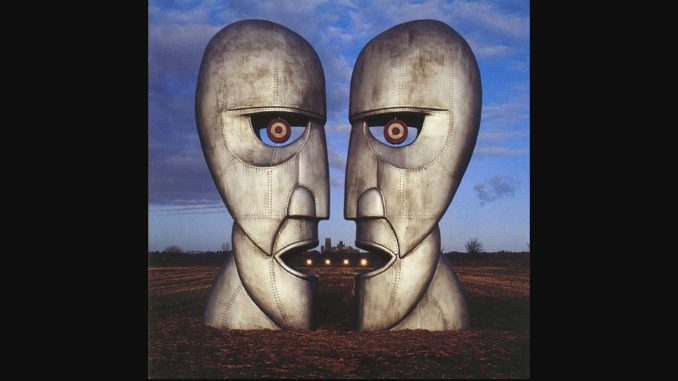
The Division Bell is the fourteenth studio album by the English progressive rock band Pink Floyd. Or, if you will, the second one by the David Gilmour-led (and Roger Waters-less) version of the band. It was released on 28 March 1994 in UK and Europe, and on 4 April in the US. It performed phenomenally well, becoming a #1 album in the US, UK, Australia, Canada, Germany, Spain, Norway, Sweden, and close to a dozen other countries, charting very high just about everywhere.
The recordings for the album had began in January 1993. The band had returned to Britannia Row, where they had recorded Animals in 1977. Back then the studio had pretty much been a bunker, but at this point it had been redecorated. It had a lot more windows, daylight and general lighting, and overall more inviting facilities. The first visit was a test, but they quickly knew that they had something cooking and committed to further sessions.
The atmosphere was good throughout, and it was joyful for everybody involved to have keyboardist Richard Wright back in the band alongside David Gilmour (vocals/guitar) and Dave Mason (drums). Wright had been contractually prevented from being involved on the previous album A Momentary Lapse of Reason (1987) beyond contributing some keyboard parts, whereas this time nothing was preventing him from being part of proceedings. He ended up being one of the main writers alongside Gilmour.
After producing some 25 song sketches, work would continue in Gilmour’s comfortable and roomy houseboat Astoria, where they more or less finished nine songs deemed “good”. These were brought back to Barnes and Olympic Studios for finalisation.
The album title was a topic of discussion. They didn’t feel they had a clear candidate. Gilmour was considering Pow Wow. Mason was partial to Down To Earth. It was Douglas Adams who came to the rescue, spurred by the promise of a payment to his favourite charity if he managed to help them out. At dinner one night, the writer suggested The Division Bell. The term appears within the album track High Hopes, one of the stand-out tracks on the album, linking the album title with the material on it. They all liked it and quickly rallied around it as the title.
If anything, the band members later expressed some annoyance at the lack of their own focus. The term was already on the album and they had performed the passage containing it numerous times. Why hadn’t they picked up on it themselves? It had been staring them in the face, as High Hopes had been part of the writing sessions from early on.

Long-time Floyd collaborator Storm Thorgerson provided the album artwork. He is famously known for always recreating his cover shots in real life. He never employs trick photography, cropping or editing, and certainly no photoshopping. What you see on the cover has actually been created just like that and then photographed.
For this particular cover, he used two large sculptures of metal heads, each the height of a double-decker bus. The sculptures were devised by Keith Breeden and constructed by John Robertson. These were erected in a field near Ely (a cathedral city in Cambridgeshire, England), with Ely Cathedral being visible on the horizon.
The sculptures were positioned together and photographed in profile, and can be seen as two faces talking to each other. They could also add up to a single, larger, third face. Thorgerson referred to this as the “third absent face” and it was a reference to Syd Barrett, the estranged founding member of the band.

In addition to the metal heads, two 7,5-metre (25 ft) stone sculptures were created by Aden Hynes. They would be used to create an alternate version of the cover photo which was used on the compact cassette release and on the tour brochure.
Due to the size of these sculptures they had to be built on the fields in Ely. This had to be done during the month of January so that the pictures could be shot in February. This month, Thorgerson felt, would provide optimal lighting conditions.
As the art was created almost in public, measures had to be taken to hide what was going on. The press would no doubt have loved to be able to share images of the album cover motif before the band was ready to announce it themselves. Camouflage nets were utilised to cover the figures.
In 2001, the sculptures could be found in the Rock and Roll Hall of Fame in Cleveland, Ohio. In 2017, they were moved to the London Victoria and Albert Museum for display in a Pink Floyd exhibition.
During a presentation of his works on 21 August 2010, Storm Thorgerson talked about the Division Bell album cover in particular when he provided some personal pointers on what he felt made covers like this one work:
- It is paramount that ideas contain a narrative
- Ideas should sustain good design
- Bad emotions are useful (tenacity, belief, paranoia, ego, anger…)
- Collaboration is encouraged, as it is fun and useful
A music video was made for High Hopes. Stylistically similar (and linked) to their cover art, the video was directed by cover artist Storm Thorgerson.

Facebook Comments